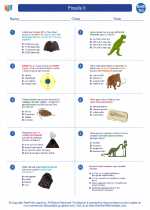Proteins
Proteins are large, complex molecules that play many critical roles in the body. They are made up of long chains of amino acids, which are linked together in a specific sequence. There are 20 different types of amino acids that can be combined in various ways to form different proteins.
Structure of Proteins
Proteins have a unique and complex three-dimensional structure, which is essential for their function. The primary structure of a protein is the specific sequence of amino acids. The secondary structure refers to the folding of the amino acid chain into alpha helices or beta sheets. The tertiary structure is the overall three-dimensional shape of the protein, and the quaternary structure is the arrangement of multiple protein subunits, if present.
Functions of Proteins
- Enzymes: Proteins act as biological catalysts, speeding up chemical reactions in the body.
- Structural Support: Proteins such as collagen provide structure and support to tissues and organs.
- Transport: Certain proteins, like hemoglobin, transport molecules such as oxygen in the blood.
- Immune Function: Antibodies are proteins that help the body defend against pathogens.
- Hormones: Proteins like insulin act as chemical messengers in the body.
- Regulation of Gene Expression: Some proteins regulate the expression of genes.
Sources of Proteins
Proteins are found in a variety of foods, including:
- Meat and poultry
- Fish and seafood
- Eggs and dairy products
- Legumes and beans
- Nuts and seeds
- Grains, such as quinoa and amaranth
Study Guide
When studying proteins, it's important to understand their structure, functions, and sources. Be sure to learn the different types of amino acids and how they are linked together to form proteins. Practice drawing and labeling the structure of proteins, and understand how their structure relates to their function. Additionally, familiarize yourself with the various roles that proteins play in the body and their significance in human nutrition.
.


